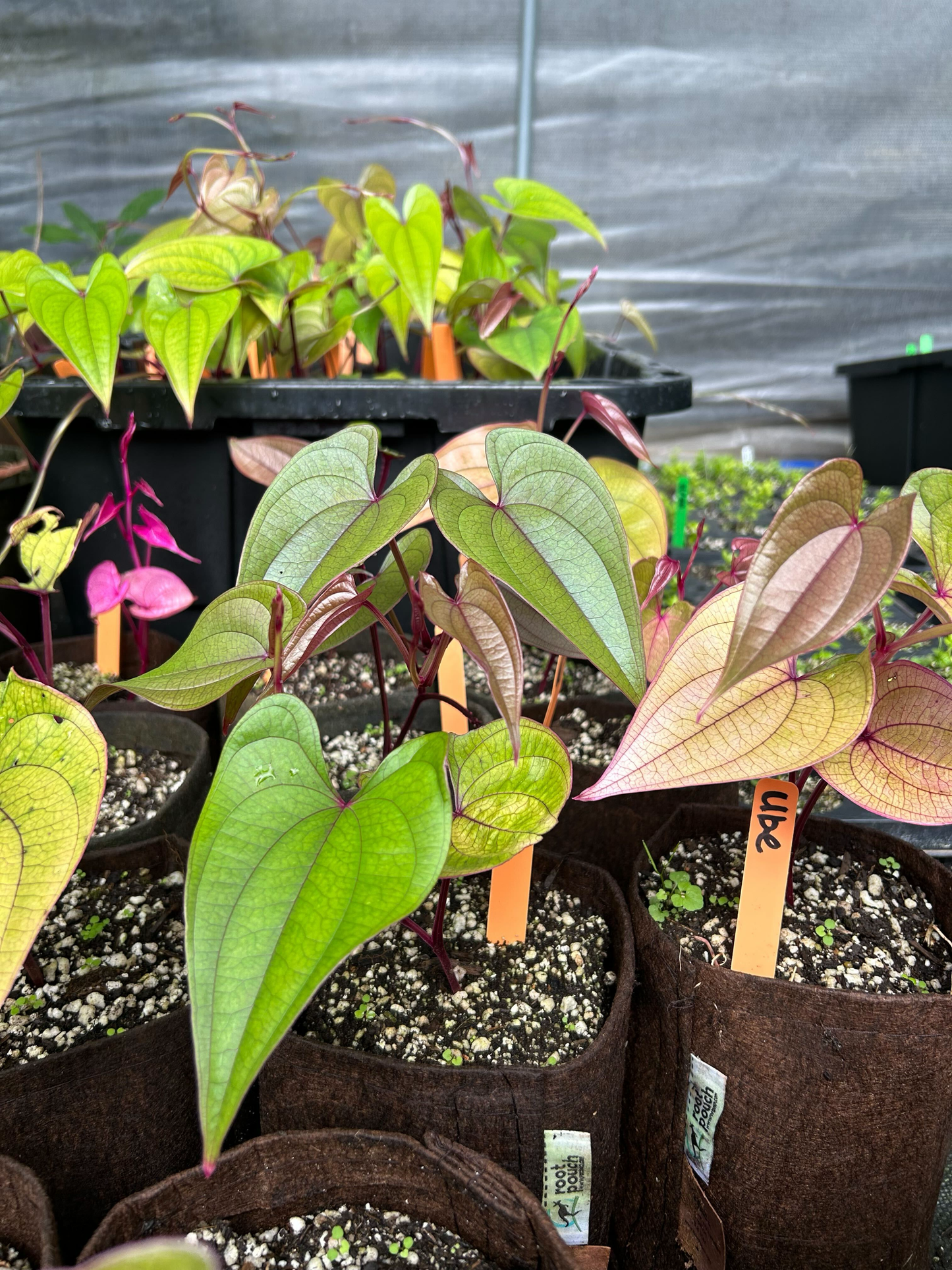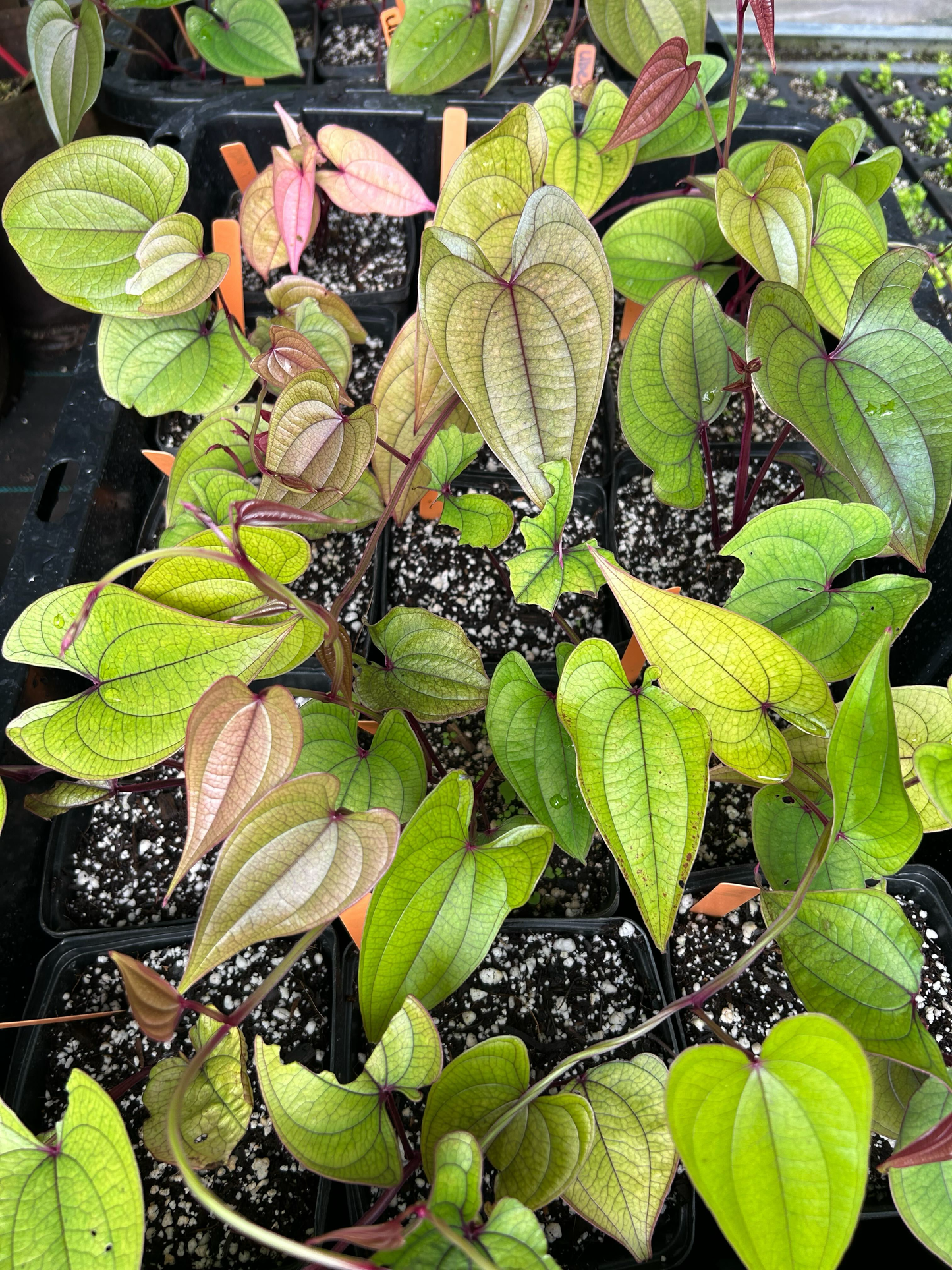Ube, True - Dioscorea alata
Ube, True - Dioscorea alata
3 inch Pot - 8 to 12" tall plant in 6" diameter x 7" tall pot. SHIPPABLE
1 gallon Pot - 8 to 16" tall plant in 5" x 5" x 6" tall pot. SHIPPABLE
Small Tree Pot - 8 to 16" tall plant in 5" x 5" x 6" tall pot. SHIPPABLE
Large Tree Pot - 8 to 16" tall plant in 5" x 5" x 12" tall pot. SHIPPABLE
3 gallon Pot - 18 to 36" tall plant in 10" diameter x 8" tall pot. IN STORE ONLY
5 gallon Pot - 30" to 60" tall plant in 11" diameter x 10" tall pot. IN STORE ONLY
15 gallon Pot - 60" to 75" tall plant in 17" diameter x 15" tall pot. IN STORE ONLY
Couldn't load pickup availability
Ube is the popular purple yam known for its unique nutty, vanilla taste and vibrant color. Because importation of fresh Ube is banned in California, all Ube products eaten here are actually made with purple sweet potato (Ipoeama batata) and synthetic Ube flavoring.
The only way to get real Ube here is by growing it yourself!
Ube is a true yam (not to be confused with orange sweet potato which is called yam in the US), a tuberous, vining plant from the tropics. This plant needs a long warm season, consistent water, and plenty of fertility to grow well.
CARE INSTRUCTIONS
Ube prefers highly fertile soil and plenty of water. Under the right conditions Ube can be very productive. Plant early in your warm season, as Ube will need at least 6 months of warm weather to set plenty of tubers. Plant in well amended soil with plenty of compost. Provide multiple tall poles (vines can climb up to 20ft) for the vines to climb up. Water regularly throughout the warm season. When plants die back in winter, harvest tubers.
ABOUT THIS PLANT
Botanic Name: Dioscorea alata
Lifespan: Tender Perennial
Hardiness Zone: Zone 9 to 10
Growth Structure: Very tall, vining
Fertility Preference:
★
★
★
★
★
Water Preference:
★
★
★
★
★
Sun & Light Preference:
★
★
★
★
★
Dormancy: Winter dormant
Cold Tolerance: 32F
Flowers? No,
Edible? Yes
Native to: Southeast Asia




